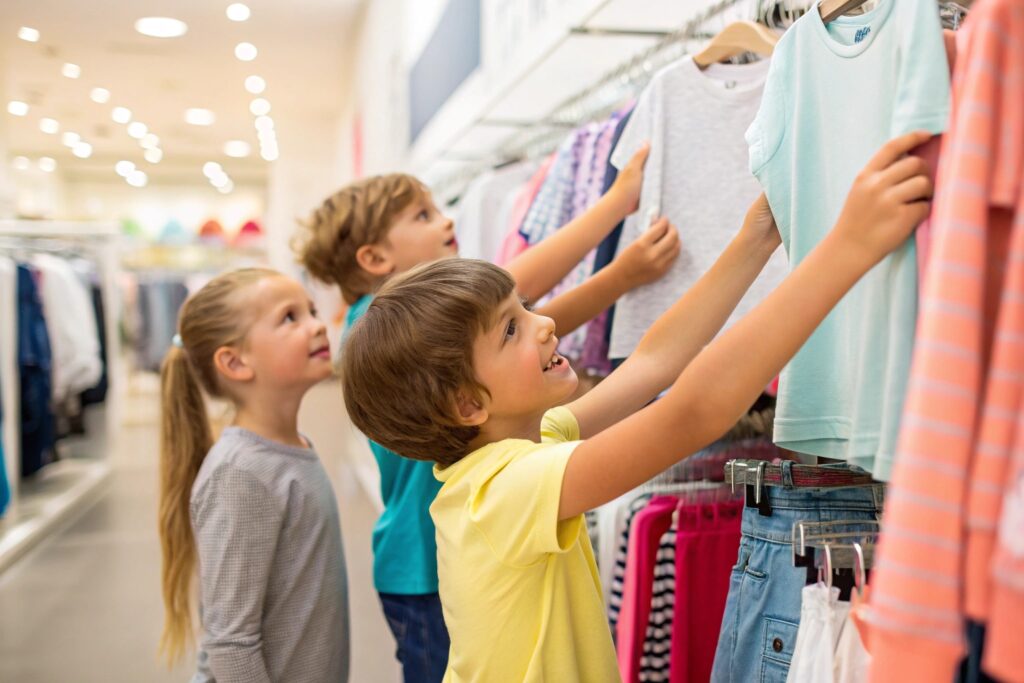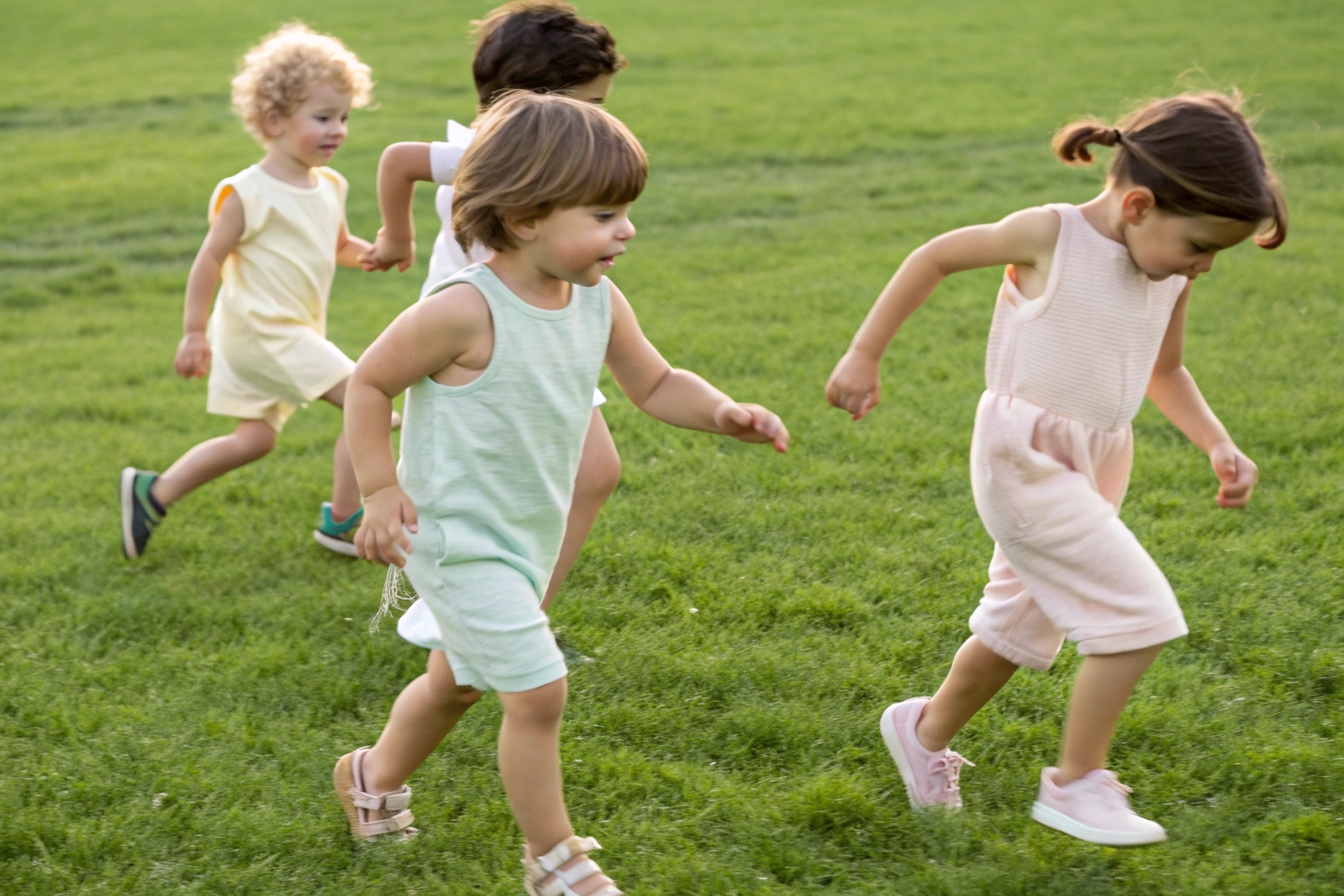Children don’t just wear clothes—they live in them. That’s why comfort, safety, and freedom of movement are top priorities for any parent or brand.
The most comfortable clothes for children are made from soft, breathable fabrics with simple, non-restrictive designs that support play, growth, and skin health.
Let’s explore the materials, fits, and features that truly work for babies and kids.
What fabrics are safest for baby skin?
Baby skin is five times thinner than adult skin—which makes it more absorbent, sensitive, and easily irritated.
The safest fabrics for baby skin are organic cotton, bamboo viscose, and OEKO-TEX certified textiles free from harmful chemicals, dyes, or rough textures.

What fabric properties protect babies?
When sourcing babywear, prioritize:
- Softness – Prevents friction and rashes
- Chemical-free processing – No formaldehyde or bleach
- Hypoallergenic fibers – Reduces allergic reactions
- Breathability – Regulates temperature
Best fabric choices for newborns and infants:
| Fabric Type | Safety Level | Benefits |
|---|---|---|
| Organic Cotton | ✅✅✅ | Chemical-free, breathable, soft |
| Bamboo Viscose | ✅✅ | Silky feel, anti-bacterial |
| Modal (from beech) | ✅✅ | Ultra-soft, good stretch |
| OEKO-TEX Cotton Blends | ✅✅ | Tested for 100+ toxic substances |
| Linen (washed) | ✅ | Breathable, but slightly textured |
At Fumao, our babywear production follows CPSIA and OEKO-TEX safety standards—ensuring no heavy metals, azo dyes, or unsafe finishes touch a child’s skin.
Are loose or fitted clothes better for toddlers?
Toddlers run, crawl, tumble—and rarely stay still.
Loose-fitting clothes are better for toddlers because they allow free movement, prevent overheating, and reduce the risk of chafing or pressure marks.

Why does fit matter at this stage?
Toddlers are in constant motion. Tight waistbands or stiff seams can:
- Restrict motion
- Cause discomfort when sitting or squatting
- Trap heat or sweat
- Lead to skin indentations or rashes
Loose doesn’t mean oversized. The right fit provides:
- Room to grow (especially in pants and sleeves)
- Elastic waists for easy changes
- Drop shoulders or raglan sleeves for arm flexibility
- Soft cuffs to avoid dragging
Here’s a quick fit guide:
| Clothing Item | Recommended Fit Type | Details |
|---|---|---|
| T-Shirts | Slightly loose | Room around neck and chest |
| Pants & Leggings | Stretchy waist, roomy hip | Allows diaper space and free crawling |
| Dresses | A-line, soft waistbands | Easy to pull over, no tight seams |
| Pajamas | Snug but stretchy | Safe for sleep, must follow safety laws |
Pro tip: always look for flat seams and tagless labels to prevent irritation.
Which outfits help babies move comfortably?
Babies need freedom to stretch, roll, kick, and crawl—so outfit design makes a big difference.
One-piece rompers, kimono-style tops, elastic-waist pants, and soft overalls are the best outfits for baby mobility and comfort.

What design features make baby clothes more movement-friendly?
-
- Less irritation during rolling or tummy time
-
Stretchable necklines or envelope collars
- Easy to pull on/off without squeezing the head
-
- Flexible for diaper movement and crawling
-
Snaps in the right places
- Bottom snaps for easy diaper changes
- Shoulder snaps for larger head clearance
-
No stiff collars or tight cuffs
- These restrict arms and legs
Best movement-friendly babywear types:
| Outfit Style | Why It Works | Age Range |
|---|---|---|
| Rompers/Onesies | One piece, stretchable, snap bottom | 0–12 months |
| Footless Sleepers | Allows toe wiggle, easier crawling | 3–18 months |
| Elastic Waist Pants | Adjustable, easy to pair with tops | 6–24 months |
| Wrap Bodysuits | No over-the-head pulling | Newborns |
At Fumao, we design babywear patterns with generous hip widths and raglan cuts—so active infants never feel restricted.
Do kids prefer cotton or synthetic materials?
If given the choice, most kids choose what feels good—not what looks trendy.
Kids generally prefer cotton over synthetic fabrics because it feels softer, breathes better, and reduces itchiness during daily activity.

Why do natural fabrics win for comfort?
Unlike adults, kids often avoid rough, clingy, or “hot” fabrics. Cotton wins because it’s:
- Cooler – Doesn’t trap body heat
- Soft – Less friction on skin
- Familiar – Used in PJs, T-shirts, and schoolwear
- Easy to wash – Holds fewer odors or stains
Here’s a breakdown of how kids react:
| Fabric Type | Comfort Rating (By Kids) | Ideal For |
|---|---|---|
| Cotton Jersey | ✅✅✅ | Everyday tees, underwear |
| Cotton Fleece | ✅✅ | Hoodies, joggers |
| Polyester Mesh | ✅ | Sports kits only |
| Spandex/Poly Blends | ✅ | Leggings, stretch pants |
| Rayon/Bamboo | ✅✅ | Dress shirts, sleepwear |
However, blended fabrics like cotton-poly can work well if they retain cotton’s softness. For school uniforms or activewear, kids often tolerate synthetics if stretch and breathability are built in.
Conclusion
Children’s comfort starts with the right fabric and fit. Soft, breathable materials and simple, movement-friendly designs make all the difference—especially in early childhood. When you prioritize comfort, kids move freely, feel better, and stay happier in what they wear.










